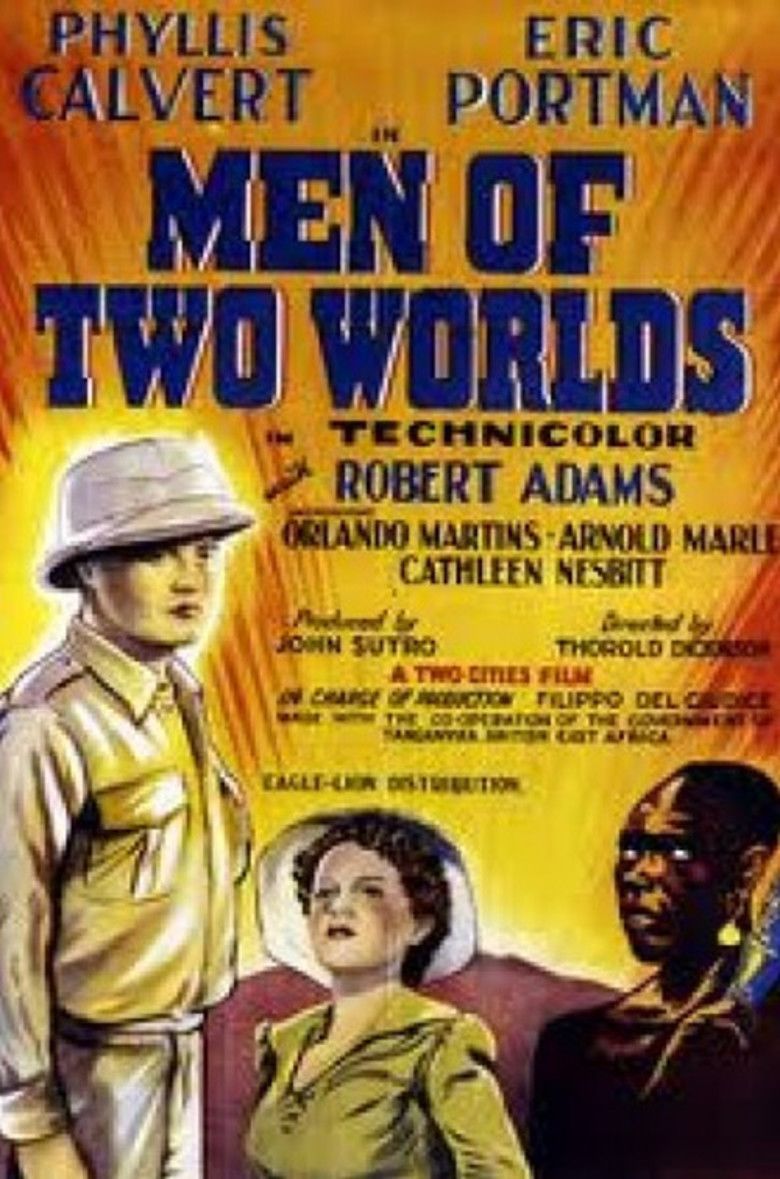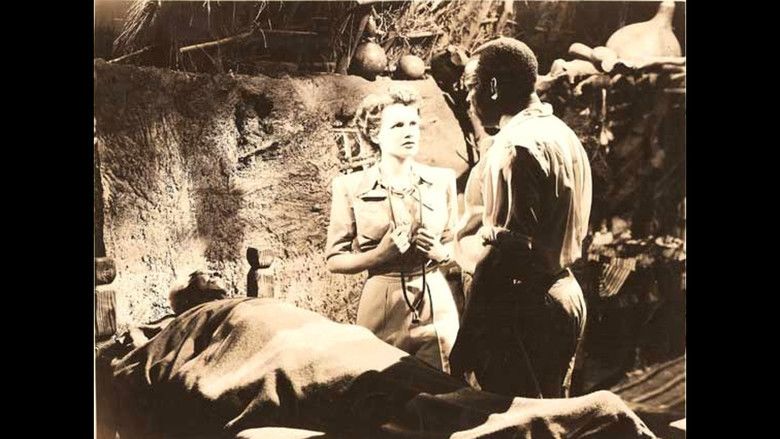Men of Two Worlds
6 /10 1 Votes6
Running time 1h 49m Genre Drama Language English | 5.8/10 IMDb Duration Costume design Dorothy Broomham Country United Kingdom | |||||||||||||||||||||||||||||||||
 | ||||||||||||||||||||||||||||||||||
Release date 1946 Based on story White Ants by Eileen Arnot Robertson Cast (Kisenga), (District Commissioner Randall), (Magole), (Dr. Caroline Munro), Arnold Marlé (Prof. Gollner), (Mrs. Upjohn)Similar movies Eric Portman and Phyllis Calvert appear in Men of Two Worlds and Child in the House | ||||||||||||||||||||||||||||||||||
Arthur bliss baraza from men of two worlds 1945
Men of Two Worlds is a 1946 British Technicolor drama film directed by Thorold Dickinson and starring Robert Adams, Eric Portman and Phyllis Calvert. The screenplay concerns an African music student who returns home to battle a witch doctor for control over his tribe.
Contents

The film was released in the US as Kisenga, Man of Africa.

Plot
Kisenga, is a composer and pianist from Marashi in Tanganyika who has spent fifteen years in London. He decides to return to his homeland to help the District Commissioner, Randall, in the work of health care.
Randall explains that an outbreak of sleeping sickness caused by the Tsetse fly is moving across Tanganyika and has almost reached Marashi. He wants to transfer the population of 25,000 to a new settlement on higher ground and set fire to the bush to destroy the Tsetse fly. Randall is helped by Dr Munro.
Kisenga arrives at Marashi. His sister Saburi is engaged to a young man named Ali, an assistant at the dispensary. Kisenga meets the Chie Rafuf, who is under the control of Margoli, a witchdoctor. Rafi does not want to move.
Kisenga decides to settle in his old home and teaches music. The Tsetse fly gets closer to the village and Doctor Burton wants to do blood tests on villagers, which are opposed by Margoli.
Margoli fights the doctors and Kinsenga's father dies of malarie. Margoli casts spells against Kisenga. He falls ill but recovers when the children perform Kisenga's music. The clearing of the village begins and the people leave for their new settlement.
Cast
Production
The film was written by Joyce Carey who had worked in Africa as a civil servant
Esther Makumbi was the one lead actor from Africa - the rest were based in Britain.
Filming began in 1943, with eight months shooting in Tanganyika. A U-boat sank cameras and stock on the way out. Cameras were impounded and shooting was held up with slow convoys, bad weather, a strike of lab men in Hollywood and difficulties involved in shooting in Technicolor.
Filming in Tanganyika cost an estimated ₤600,000. The film had to be re-done in England. The replica of the Concert Hal built at Denham Studios was one of the largest sets ever built in England.
Thorold Dickinson said "Our picture categorically insists that witchcraft does exist; that it is suggestion, supported by all the trappings of religion, and can only be defeated by counter-suggestion.It's a struggle of mind against mind. There is a terrific blood motive running through the story. Blood drips in color. The East Africans believe that blood is the life. Blood gives power. This primitive thing - this bloodlust - is really pure fascism and has got to be killed."
Filming in England started in January 1945.
The movie was part of a series of movies which cost ₤3 million, aimed at beating Hollywood head on. The others were London Town (₤700,000), Henry V (₤450,000) and Caesar and Cleopatra (₤1,300,000).
Release
The film had its world premiere at Avalon Cinema in Dar Es Salam on 16 July 1946. It then had its London premiere in front of the King and Queen.
According to trade papers, the film was a "notable box office attraction" at British cinemas.
It was the 17th most popular film at the British box office in 1946 after The Wicked Lady, The Bells of St. Mary's, Piccadilly Incident, The Captive Heart, Road to Utopia, Caravan, Anchors Away, The Corn is Green, Gilda, The House on 92nd Street, The Overlanders, Appointment with Crime, The Bandit of Sherwood Forest, Kitty, Spellbound, and Scarlet Street.
The film had trouble being seen in the US due to censor concerns over its depiction of black people. It was not released in the US until 1952.
BFI Screenonline later said the film was "a creditable effort to tell an African story from the point of view of an African. The story only makes sense if we identify with Kisenga's dilemmas. Only he can resolve a situation in which the African and the European world views are at loggerheads, and he is prepared to give up his life in the struggle. The film gives us unusually authentic-seeming pictures of village life and ritual, and invests the people with a certain dignity and sensibility, even if ultimately they prefer superstition and fear to science. The photography is slow-moving and beautifully composed; African faces appear on screen distinct with emotion and individuality."
Dickinson and Carey travelled to India in January 1946 to research a film to be made there.
References
Men of Two Worlds WikipediaMen of Two Worlds IMDb Men of Two Worlds themoviedb.org
